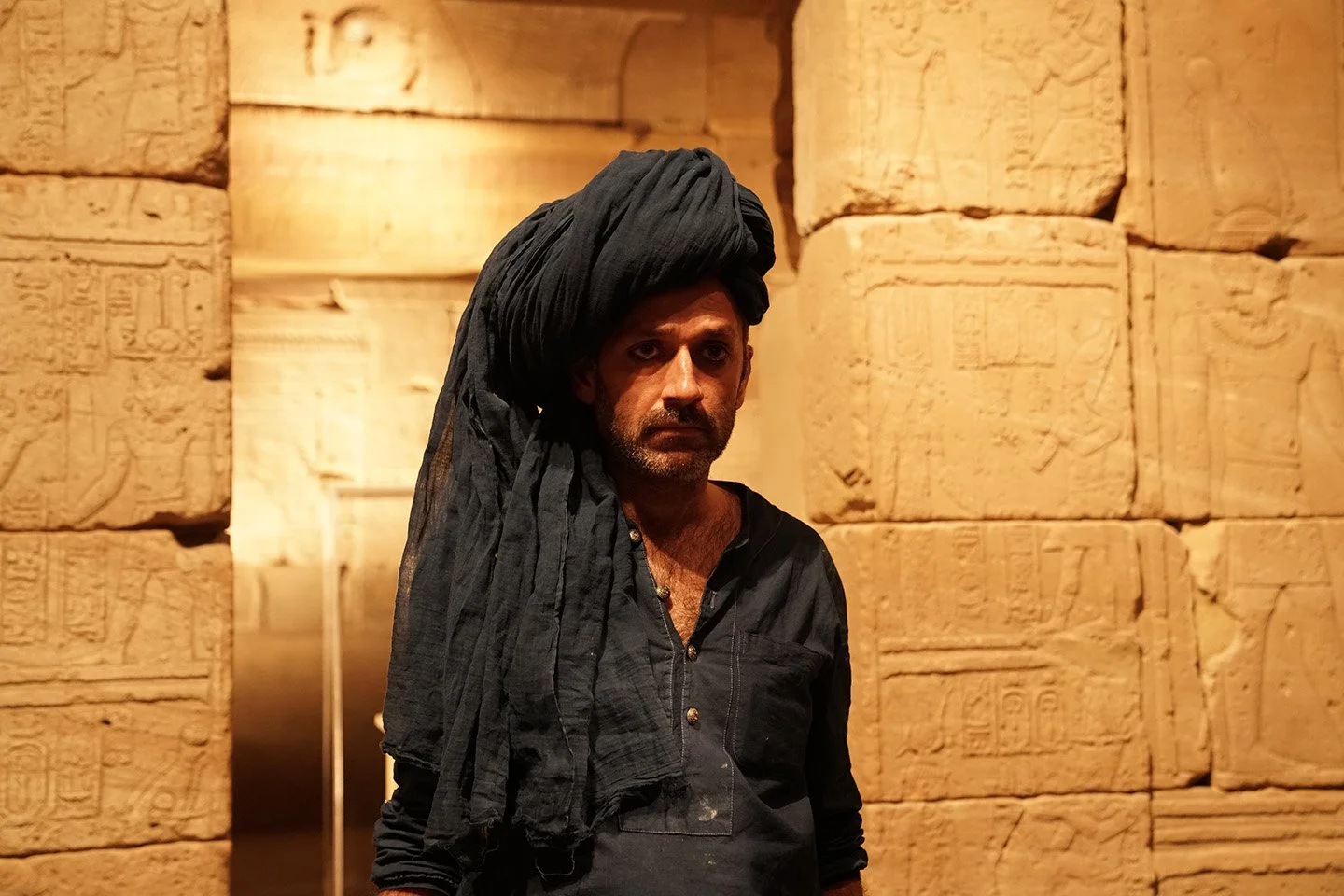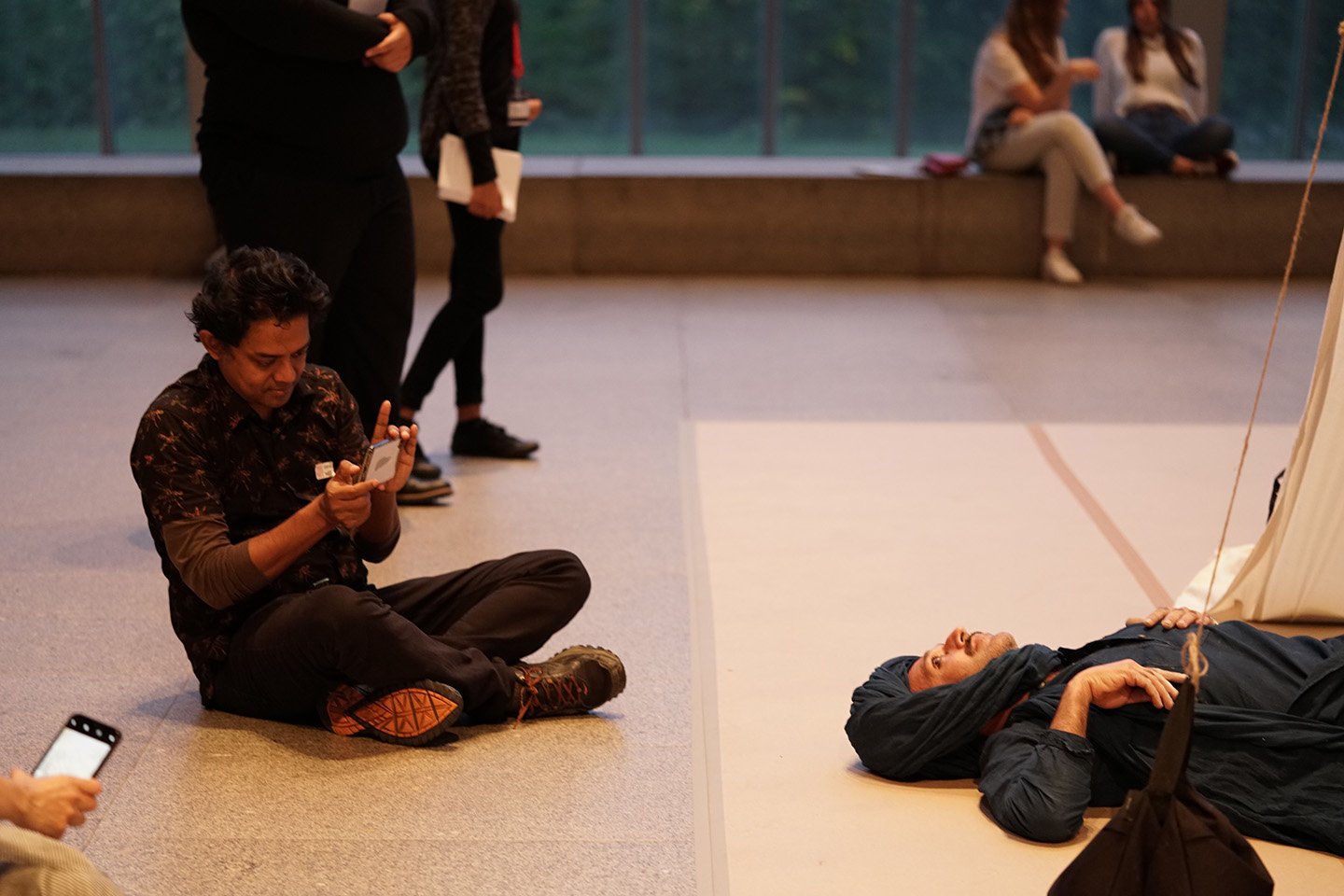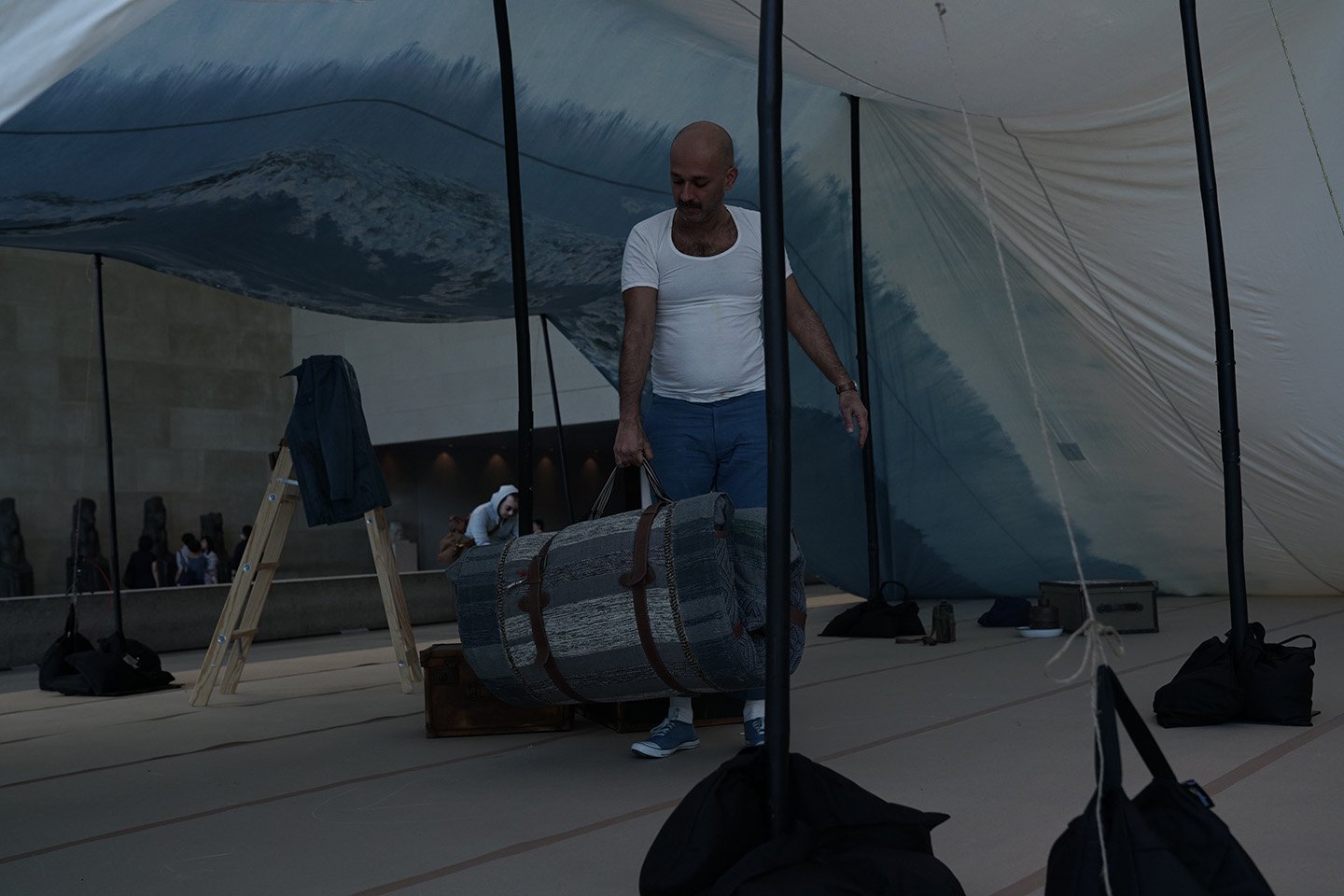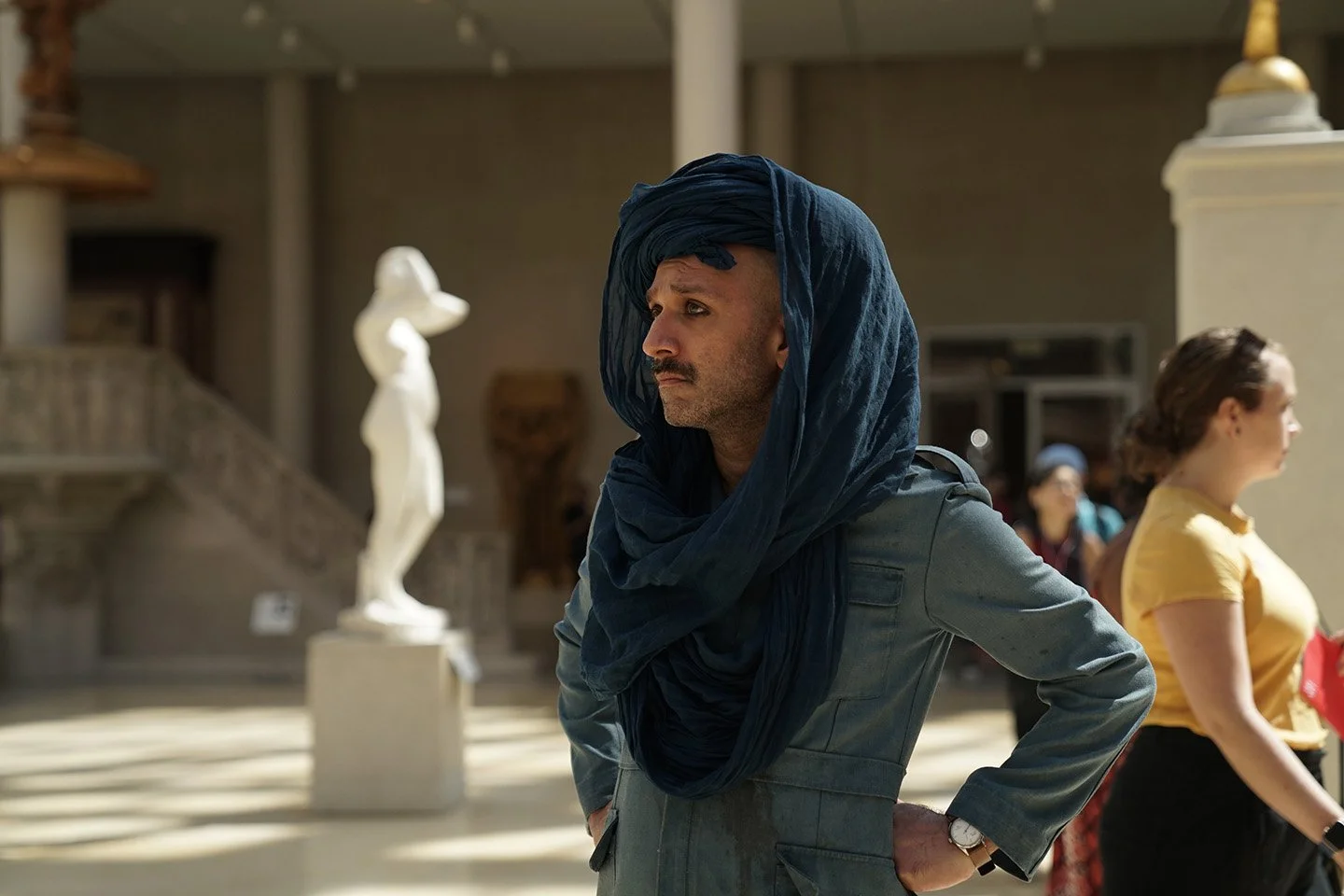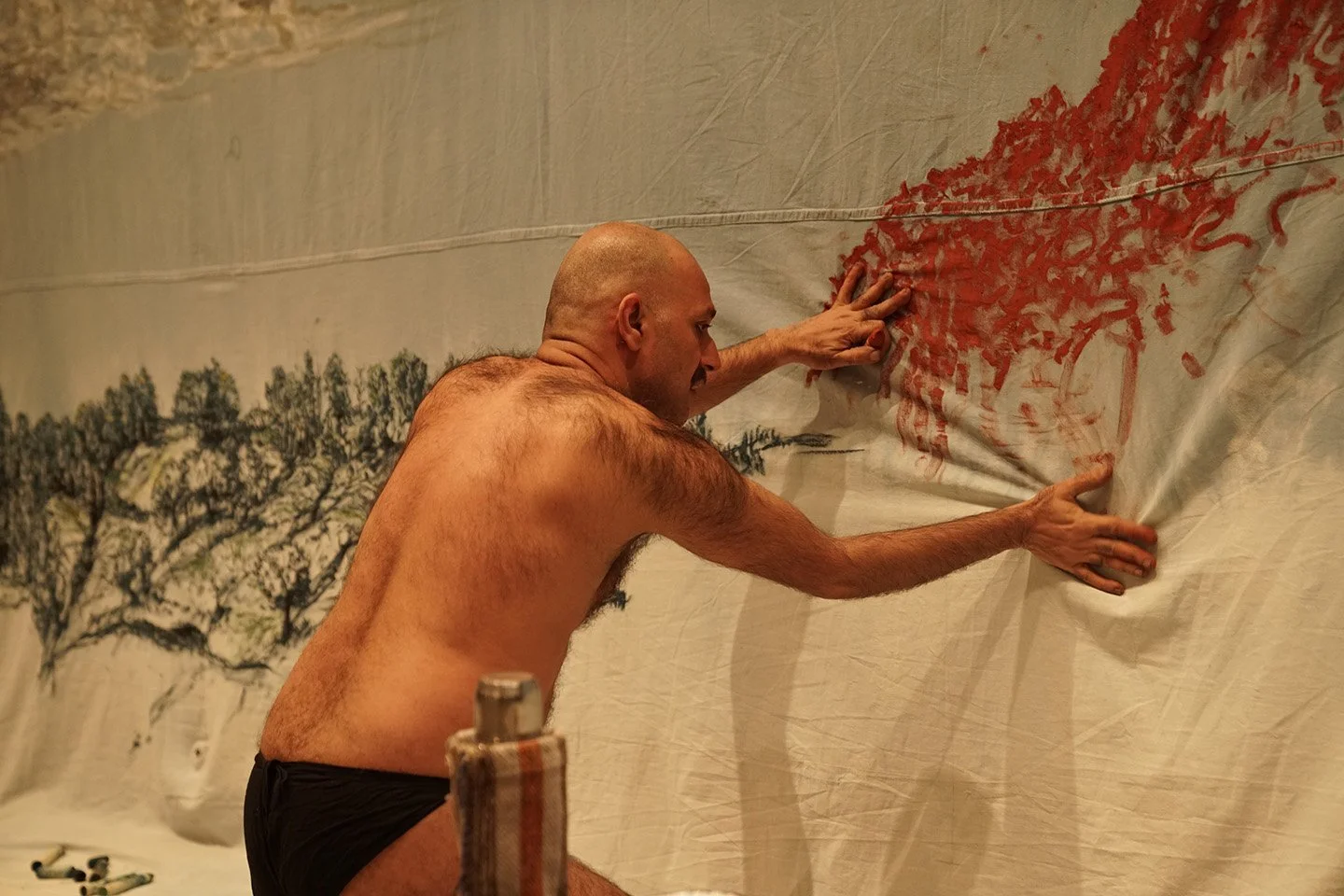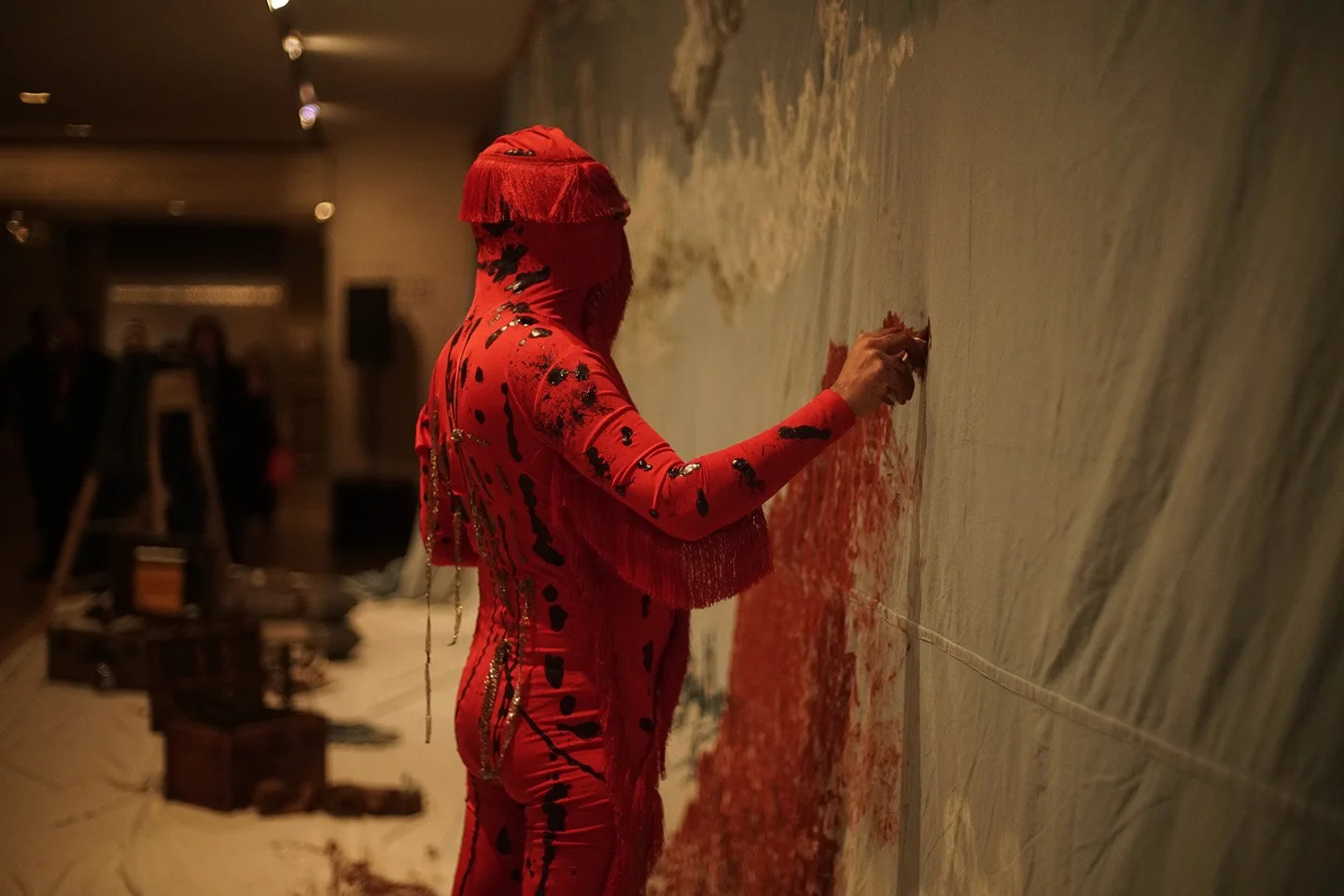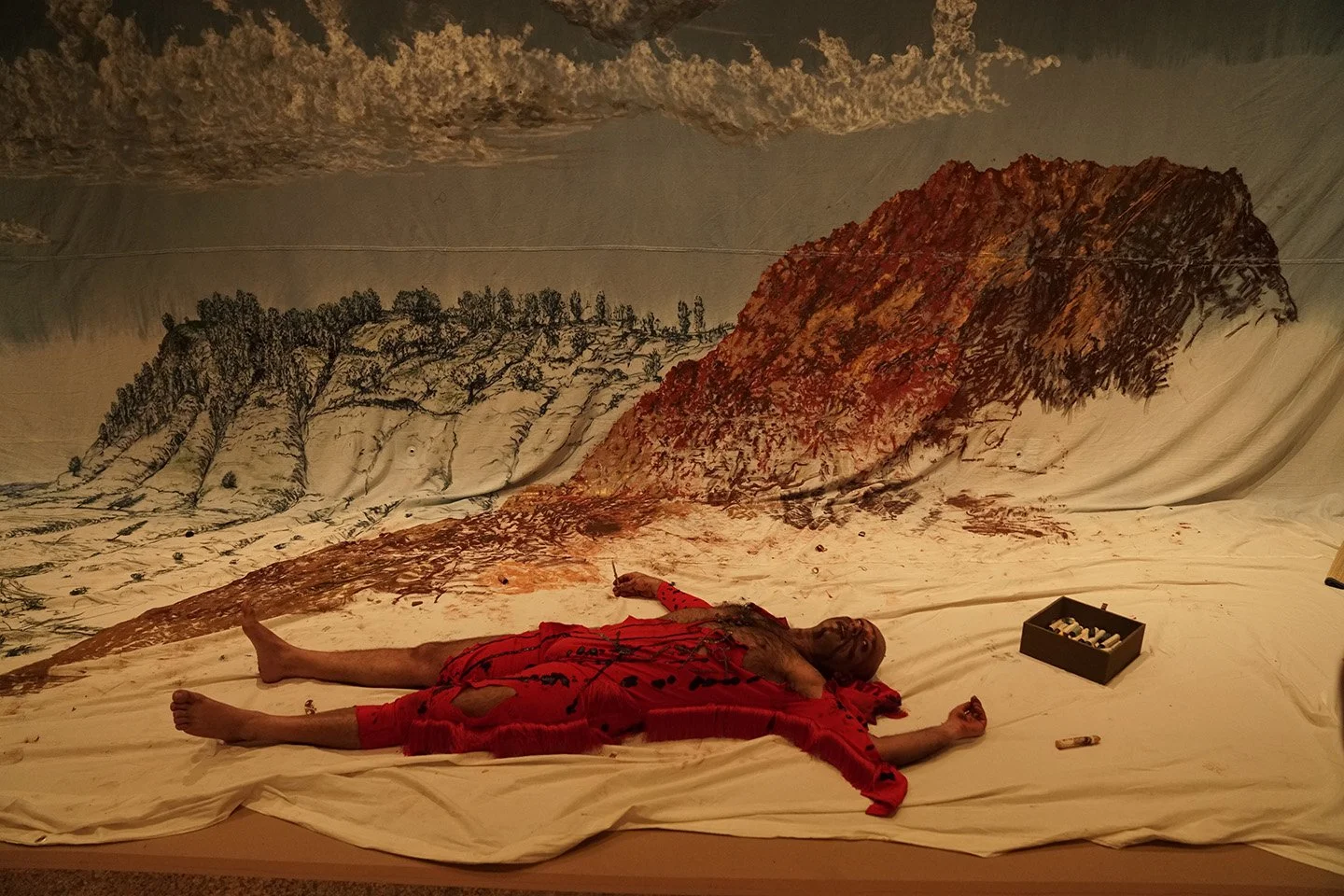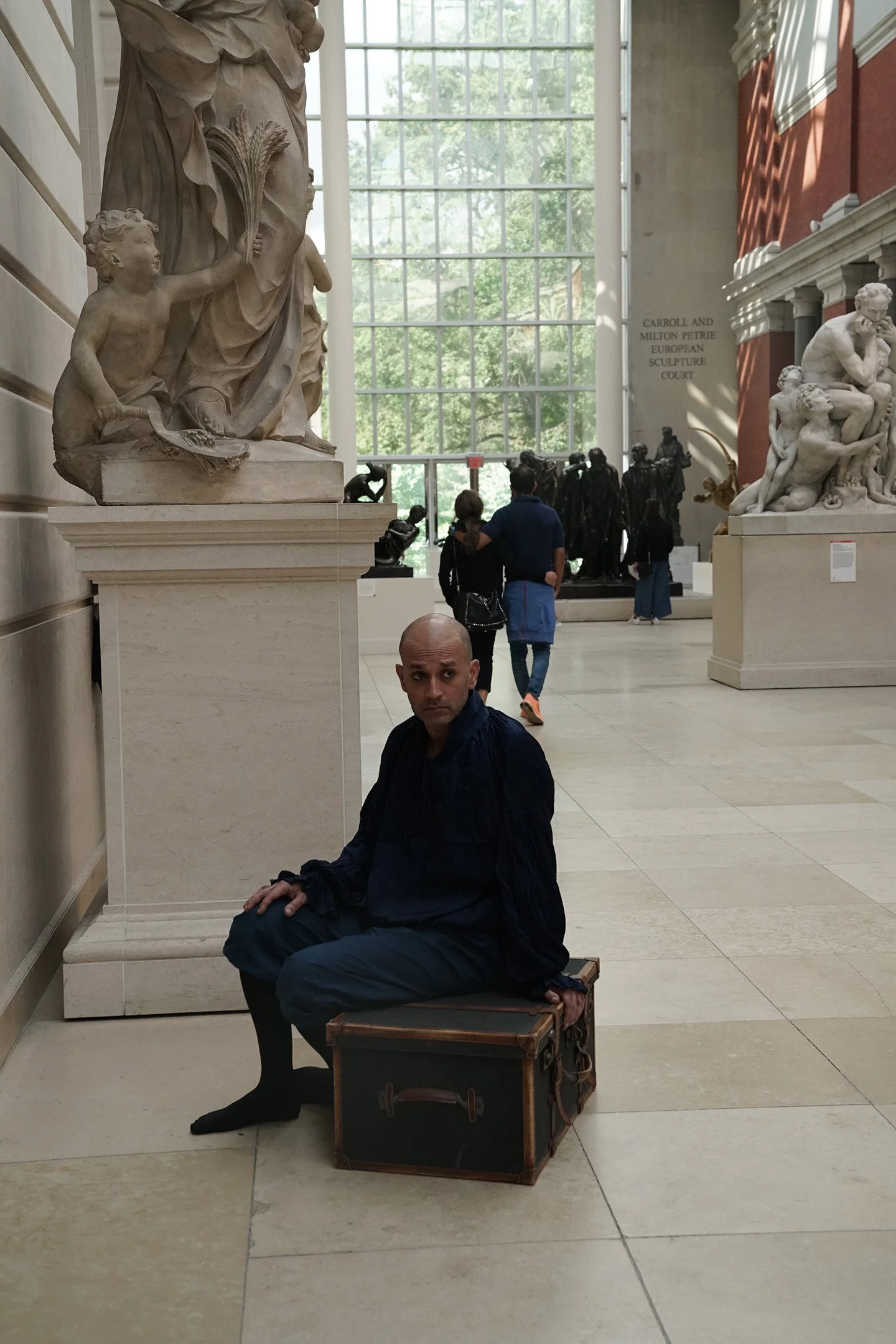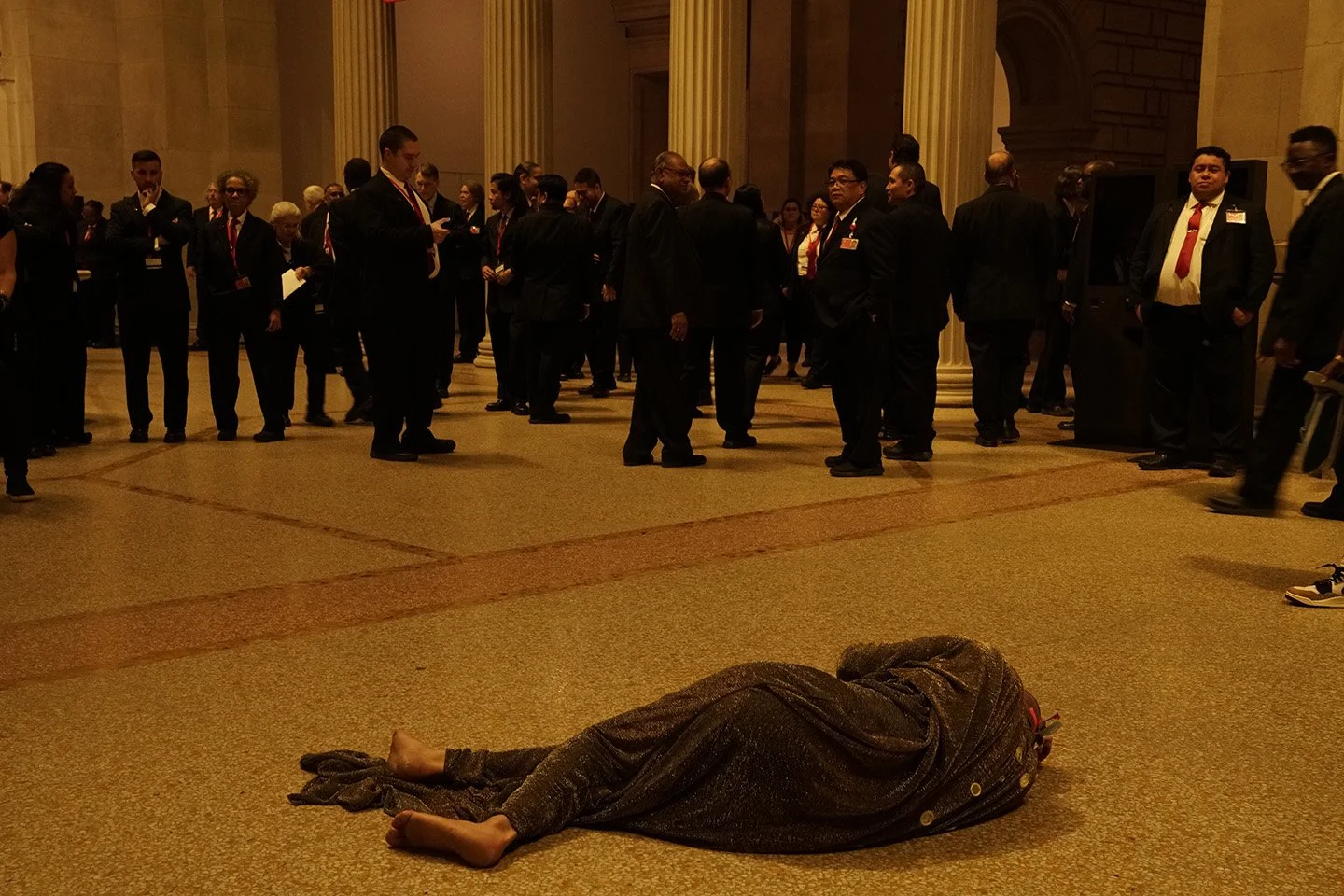
Lands, Waters & Skies
12th to 21st September 2019
2019-2020 Artist in Residence at The Metropolitan Museum of Art, New York
Costume Design by Loise Braganza
Set Design by Michael Vanreusel
Production Design by Ayesha Punvani
Sound Design by Jatin Vidyarthi aka Masta Justy
Photography by Shivani Gupta
Research by Madhavi Gore
Song Writer Gautam Sharma
Music for Songs Composed by Raoul Amaar Abbas aka Yaqeen
Perfumer Jahnvi Nandan
Project Managers Neena Percy and Shaira Sequeira
This residency was made possible by the Bagri Foundation. Additional support is provided by Sunil Kant Munjal and the Serendipity Arts Foundation, The Chester Dale Endowment, and the New York State Council on the Arts.
DAY 1
DAY 2
DAY 3
DAY 4
DAY 5
DAY 6
DAY 7
DAY 8
DAY 9
AUDIO REHEARSALS FROM THE STUDIO
Nikhil Chopra is The Met’s 2019-2020 Artist in Residence. For the first part of his residency, he will live at The Met Fifth Avenue for nine continuous days.
Chopra prepared for this performance over the course of more than a year. During multiple research trips, he spoke with curators, conservators, scientists, collections managers, building and security staff. He immersed himself in the Met’s collection and its physical layout, observing how audiences moved through the galleries.
Using the information that he gleaned, Chopra designed a specific itinerary: he will travel from the Egyptian Temple of Dendur to the threshold between the Modern and Contemporary galleries and the space holding The Met’s African, Oceanic and Ancient Americas collections, and then complete his journey in the Lehman Wing.
Chopra’s path will inevitably traverse extraordinary spans of time and geography, represented by the objects The Met has displayed according to its own logic.
He will cut across fictional frontiers, wandering from one place to another, like a nomadic traveler, carrying his own wares and materials, observing and interacting with works of art that have been transferred from their original contexts.
His reflections on the histories of these objects and the stories of their acquisition by The Met will be communicated through actions, songs and the making of a monumental landscape. At each site, Chopra will transform a large canvas into some form of shelter. On the canvas itself, he will draw an imagined landscape— sky, earth, water—an amalgam of places he has seen, remembered or invented.
Rolling out his bed each night and sleeping under camera surveillance, Chopra will connect the beat of his own pulse to the daily rhythm of the Museum. His itinerant path through the galleries will likewise echo the human displacement of past colonialism and present-day migration.
Shanay Jhaveri, Assistant Curator, Modern and Contemporary
& Limor Tomer, General Manager, Live Arts
My body, like yours, is a “museum” that holds a collection of memories. These images and experiences are in a constant state of flux; they move from New York to Kashmir, where my family comes from, and from all my past homes to where I live now, in the Indian state of Goa.
I don’t view The Met as a neutral space. As an artist, I try to hold a mirror up to the world and capture what is being reflected. I am not a historian. My eyes, ears, nose, mouth, stomach, legs, and hands are the filters through which I experience the history embedded in the objects and spaces in the physical world and the narratives around them. Memory is ultimately of the body, for me and for you.
I cannot ignore that I am at The Met, amid objects that have travelled in ways that lead to questions about ownership and how meaning is constructed from display. Our point of view within that context is equally important. I come from contemporary India and I carry the subcontinent’s colonial past with me.
The drawing I will create in front of you over these nine days will reflect my interest in animating and embodying our micro-histories—stories as opposed to histories. In doing so, I will resist existing linear narratives in favour of complexity.
The writer John Berger once asked: “Where are we when we draw? The question seems to be expecting a spatial answer, but mightn’t it be a temporal one? Isn’t the act of drawing, as well as the drawing itself, about becoming rather than being?”
Nikhil Chopra











































